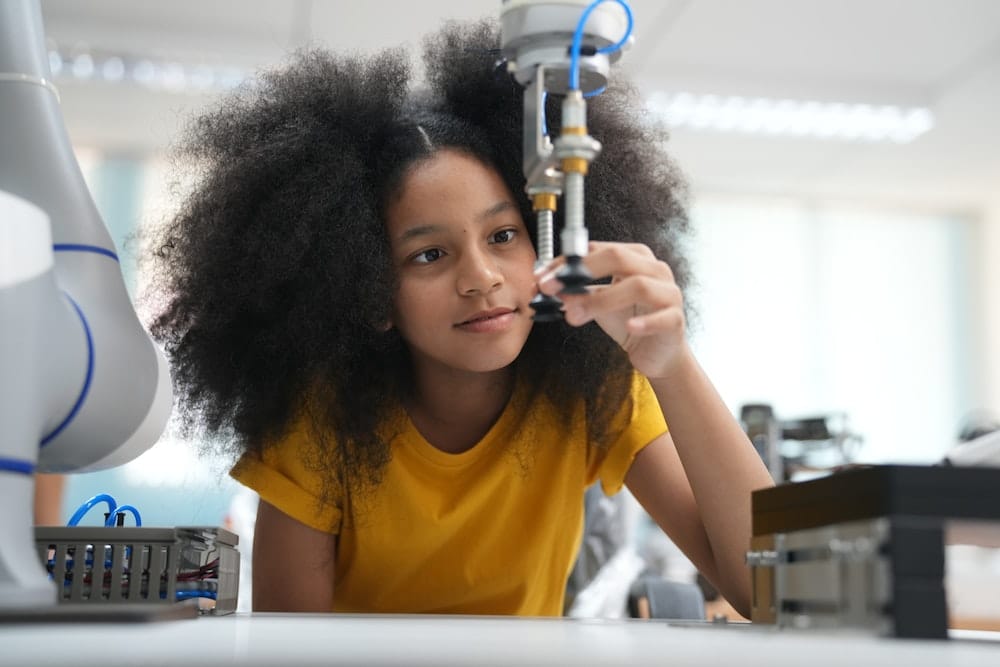How Are Emerging Technologies Transforming the Digital Art Scene?

In the ever-evolving world of creativity, technology has been a game-changer. It has not only broadened the horizons for artists but also allowed them to introduce innovative ways of expressing their artistic prowess. The advent of digital art, powered by computer technology, has ushered in a new era of creativity. This revolution is primarily facilitated by the integration of the internet and emerging technologies such as Artificial Intelligence (AI), and more recently, Non-Fungible Tokens (NFTs). As we delve into this exciting transition, we will observe how these technologies are rewriting the rules of the art world and providing new avenues for artists to create and display their works.
The Rise of Digital Art and Tech-Aided Creativity
The advent of computer technology has marked a significant shift in the art world. Digital art involves the use of digital technology as an essential part of the creative process. Artists now use various software to create and manipulate images, lending a modern touch to their work.
A lire également : What Are the Possibilities for IoT in Enhancing Interactive Learning Tools?
The concept of digital art is not new. It has been in existence since the early 1970s when artists started to experiment with computers and technological tools. However, the real breakthrough came with the internet. The internet has provided an unprecedented platform for artists to showcase their talent globally. They can now create and publish their works digitally, reaching a much wider audience than traditional galleries.
The increasing accessibility and affordability of computer technology have further democratized the field, opening doors for many aspiring artists. For instance, digital painting has become a popular form of expression, where artists use graphic tablets and styluses instead of traditional brushes and paints. This medium allows for an even greater degree of precision and control, making the creative process more flexible and efficient.
A lire aussi : How Is IoT Influencing the Development of Smart Office Spaces?
The Impact of Artificial Intelligence on Artistic Expression
The integration of artificial intelligence in the digital art scene is another fascinating development. AI is not just a technological development; it has the potential to redefine the very nature of artistic creation. In the hands of artists, AI can be a powerful tool for creating original and compelling works of art.
Artificial Intelligence can generate images that are intricate and complex, going beyond the capabilities of human imagination. Artists can now collaborate with AI to create works that are not only visually appealing but also intellectually stimulating. The AI can be fed with a vast amount of data, including various art styles and techniques, and it can then generate unique and captivating images.
AI also allows artists to experiment with different styles and techniques, pushing the boundaries of artistic expression. For instance, artists can use AI algorithms to blend different styles, create new patterns, or even transform photos into paintings. Such possibilities have led to the emergence of a new art form, known as AI art, which represents a fusion of human creativity and machine intelligence.
The Advent of NFTs and the Monetization of Digital Art
The latest disruptor in the digital art world is NFTs, or Non-Fungible Tokens. These are a type of cryptocurrency which can be attached to digital art pieces, thereby creating a digital certificate of ownership that can be bought, sold, and traded on the blockchain.
NFTs have opened up a new market for digital artists, allowing them to monetize their work in ways that were previously impossible. Unlike traditional art, digital art can be easily copied and distributed across the internet. This has often led to issues regarding copyright and monetization. However, with NFTs, artists can now establish ownership and control the distribution of their work.
By tokenizing their work, artists can sell their creations directly to collectors without the need for intermediaries such as galleries or auction houses. This not only ensures that the artists receive a fair share of the profits, but also democratizes the art market by making it accessible to a wider audience.
The Future of Art in the Digital Age
As we look towards the future, it is evident that digital technology will continue to play a pivotal role in shaping the art scene. The integration of AI and NFTs is just the tip of the iceberg. Emerging technologies like virtual reality, augmented reality, and 3D printing are also poised to redefine the ways in which art is created, appreciated, and traded.
While these technologies offer exciting possibilities, they also raise interesting questions about the nature of art and creativity. As machines become more intelligent and capable of creating art, what does it mean to be an artist? How do we attribute creativity and originality in the age of AI and NFTs? These are important questions that we must grapple with as we navigate the intersection of art and technology.
However, it’s important to remember that technology is merely a tool. It can facilitate the creative process, but it cannot replace the human spirit of creativity. As we embrace these exciting developments, let’s not forget the value of human imagination and the power of artistic expression. Whether created by hand or computer, art will always be a reflection of our thoughts, emotions, and experiences.
Exploring Other Technologies Reshaping the Art Scene
Apart from AI and NFTs, several other emerging technologies are creating significant ripples within the art realm. Virtual Reality (VR) and Augmented Reality (AR) are two such technologies that are expanding the creative canvas for artists and transforming the way audiences interact with art.
VR, for instance, immerses the viewer in a completely virtual environment. Artists can create deeply engaging and interactive artworks that invite audiences to step into their creative universe. This can provide a more profound and immersive experience compared to viewing traditional two-dimensional art.
AR, on the other hand, overlays digital information onto the real world, creating an enhanced version of reality. This allows artists to incorporate interactive elements into their work, creating a dynamic and engaging experience for the viewers. For example, viewers could use their smartphones to interact with an AR art piece, revealing hidden layers or animations.
Another technology worth mentioning is 3D printing, which is revolutionizing the process of art creation. 3D printing allows artists to turn digital designs into tangible works of art. It provides a high level of precision and enables the creation of complex shapes that would be difficult, if not impossible, to achieve with traditional sculpting methods.
Clearly, these emerging digital technologies are opening up a whole new world of possibilities for artists, enabling them to push the boundaries of creativity and create art in ways that were unimaginable a few decades ago.
Understanding the Role of Social Media in Digital Art Promotion
The impact of social media in the promotion and visibility of digital art cannot be overstated. Platforms like Instagram, Facebook, and Twitter have become the go-to spaces for artists to showcase their work, share their creative process, and engage with their audience.
For digital artists, social media provides an instant platform to reach a global audience. Artists can share their works of art as soon as they are created, receive instant feedback, engage in dialogues with their followers, and even sell their work directly to fans.
Additionally, social media has democratized the art market. Artists no longer need the validation of galleries or critics to reach their audience. They can build their own fan base and create their own opportunities, thus leveling the playing field.
The influence of social media also extends to the way digital art is consumed. The ease of sharing and reposting art on these platforms has led to a broader appreciation and consumption of art. It has made art more accessible and relatable, helping to cultivate a new generation of art enthusiasts.
Conclusion: Embracing the Digital Transformation of Art
As we move further into the digital age, the transformation of the art scene through technology is inevitable. The emergence of AI, NFTs, VR, AR, 3D printing, and social media platforms are not just enhancing the ways in which artists create, but are also redefining the modes of engagement for audiences.
The challenge and opportunity for artists lie in harnessing these digital technologies to expand their creative horizons, while also navigating issues of copyright, monetization, and the evolving definition of art. For audiences, the task is to remain open to these new forms of artistic expression and to appreciate the creativity and innovation that technology can bring to art.
While the impact of technology on art is profound, art’s essence will always transcend technology. It’s a product of human imagination and emotion – a beacon of our collective experiences. As we stand at the intersection of art and technology, it’s crucial to remember that technology is the tool, and the human spirit is the artist. Whether it’s a brush or a software program, the tool is merely a means to an end – the creation and appreciation of art. As we forge ahead into the future, let’s celebrate this exciting fusion of art and technology, ensuring that the human element of creativity remains at the heart of all artistic endeavors.
